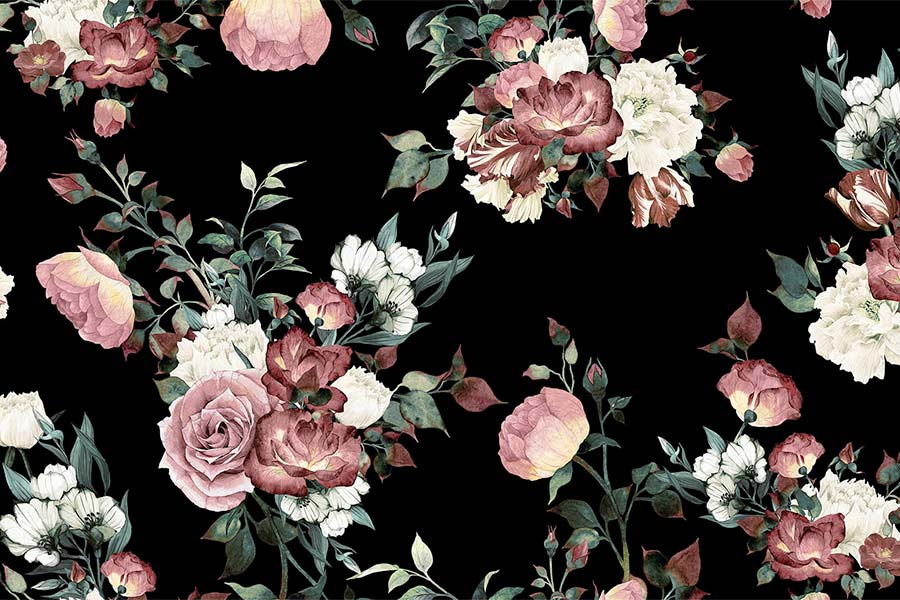BLOOM
THE EVERGREEN APPEAL OF FLORAL TEXTILES
One of the timeless, forever in trend motifs of the textile industry would be the floral category. The origin of floral motifs on textiles materialized centuries ago, which will be discussed further here.
Initially, women of the early ages used real flowers to decorate their clothing, as floral wreaths, brooches and bouquets, as they added a fragrant touch which personalized their look with a sublime scent.
During the 12th century, in China, florals were implemented onto fabrics with embroidery technique. The very famous Peonies were a common inspiration and a symbol of juxtaposing wealth and honour. This was soon adapted to the Middle Eastern and other Asian countries, like Japan, transposed intricate floral embroidery on their authentic attire, the Kimonos.
Around the Middle Ages, European merchants saw a potential opportunity in importing textiles. Floral fabrics with motifs like Tulips were traded via Italy, who frequently used to trade with the Ottoman.
Then came the most celebrated Chintz fabric, a floral block printed cotton calico fabric produced in India, which was introduced to Europe in the 17th century. The manufacturing process was kept a secret for a long time, but soon it was decided by the British, and mass-produced at economic prices during the Industrial Revolution in the 19th century. Textile production of floral fabrics grew exponentially in the wake of the Industrial Revolution, making floral prints accessible and affordable to all classes.
During the Mughal period, florals were seen not only on textile but on architecture as well. Inspired by the beautiful Mughal gardens, they started adapting the motifs onto the carved stone decorations at palaces, private homes and temples. It was also considered as a religious symbol. The centrality of flowers is considered as India’s authentic historical design feature.
Floral designs have been adapted and rendered in a million possible ways, and still, are being experimented in different connotations. Realistic adaptation is where the anatomy of the flower is sustained, giving it a more natural look. Stylized adaptation is when the flower experiments with varied take on its appearance. Designers have experimented the floral motifs in all shapes and form, and continue to have an affinity towards working with florals as they have a timeless appeal and a treasured classic.
Tell us your thoughts on this beautiful category of motifs!




